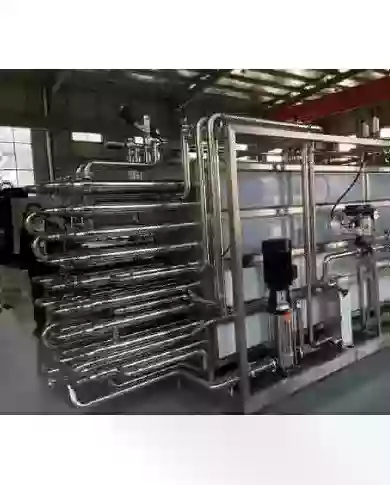TUBE HEAT EXCHANGER
TUBE HEAT EXCHANGER
Application of water cooling, refrigerant cooling, steam condensing, water heating, . . . .
Design capacity according to customer needs.
-
0
-
-
-
- +
-
575
- Products Information
- Comment
Tube beam heat exchanger.
Application of water cooling, refrigerant cooling, steam condensing, water heating, . . . .
Design capacity according to customer needs.
The device consists of a cylindrical body, with two tube blisters at both ends, and the heat transfer tubes are firmly attached to the tube blister. The bottom of the unit is connected to the housing by a flange with strong bolts. The cover is covered with a layer of insulation made of asbestos or glass wool, and the lid and bottom have a pipe connection to conduct the heat carrier.
Working principle:
– The beam tube heat exchanger is based on the principle of indirect heat exchange between two moving fluids inside and outside the heat exchanger tube.
– To enhance the efficiency of heat exchange, people create the direction of movement of the fluid in and out of the tube in the direction of perpendicular or diagonal.
– Depending on the specific application, the flow arrangement is different.
– To distribute the fluid inside and outside the tube, two chambers are created to distribute the fluid inside and outside the tube differently.
– The fluid flowing outside the tube is contained in the cylinder shell, while the fluid flowing in the tube is contained in the head cavity and inside the tube. The entire tube bundle is placed in the cylindrical housing.
. General structure of heat exchanger:
– Beam tube heat exchangers are divided into many different forms, but the basic structure is similar. There are two factors to classify: The characteristics of the outer shell and the type of flow. The following is a diagram of the general structure of a beam-tube heat exchanger:
Figure 3: Structure of heat exchanger system
The heat exchanger tube is the heat transfer surface between the fluid flowing inside the tube and the outside of the tube. These heat exchanger tubes are attached to the tube sieve face using either a soldering or a socket method. (For some applications it is possible to use both methods of pipe expansion and welding at the same time.)
Two types of tube heat exchangers are used: Plain tubes or finned tubes when one fluid has a much lower coefficient of heat transfer than the other.
Application:
Beam tube heat exchangers have a very wide range of applications, in all operating conditions from vacuum to super high pressure, from very low to very high temperatures and for all types of fluids at high temperatures. temperature, pressure difference inside and outside the tube. Utilize waste heat (cooling) to heat water for production technology such as:
Heat exchanger liquid-liquid, vapor-liquid, gas-liquid
Heated
Cooling, cooling
Heat recovery
Condensation
Steam
MAYBE YOU ARE INTERESTED
Heat exchanger
Aluminum Wing Heat Exchanger Tube
Stainless Steel Heat Exchanger Tube Aluminum Wing
Stainless Steel Wing Heat Exchanger Tube









